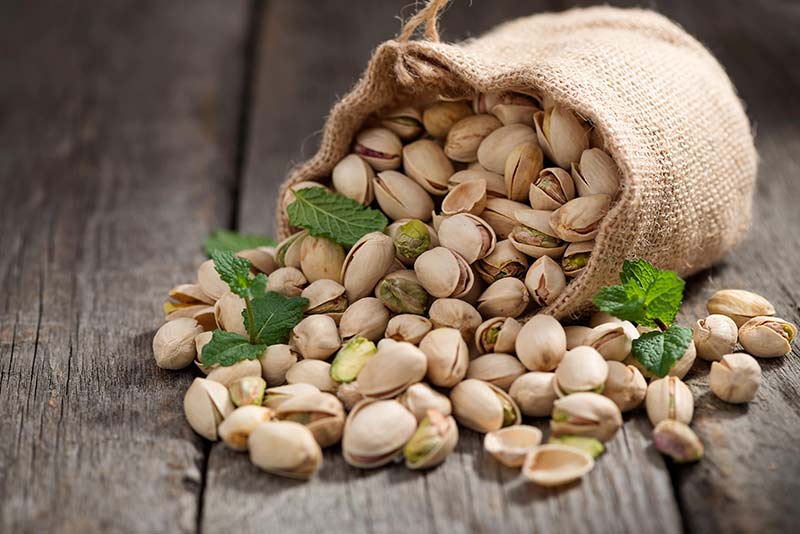Introduction
Iranian pistachios are exported in huge amount worldwide. Iran as one of the biggest exporters is following high standards of pistachios health and safety to prevent and control any potential contamination. The main potential contamination of Iranian pistachios along with contamination controlling methods and techniques are going to be discussed in this article.
Health safety issues of Iranian pistachios:
As far as health safety issues of Iranian pistachios are concerned, three main topics should be discussed; Aflatoxin contamination, pesticide residue, and microbiological contamination. Each topic is going to be explained by details particularly about Iranian pistachio.
Aflatoxin:
Aflatoxin as a harmful substance is generally produced by certain molds (Aspergillus flavus and Aspergillus parasiticus). Pistachios in particular and other tree nuts, ground nuts, dried fruits, spices and cereals are highly in danger of aflatoxin contamination. Feed supplies and food aflatoxin contamination may cause serious consequences for animal and human health.
Three important factors in aflatoxin contamination of pistachio trees are time, heat, and moisture. Due to the importance of aflatoxin-free pistachio nuts for export, some techniques are used by Iranian farmers and exporters to prevent aflatoxin contamination in the products.
Pistachio aflatoxin mostly occurs in farms, then by following good manufacturing and processing practices, there is a little chance of adding aflatoxin during pistachio processing, warehousing, or export trade shipment.
the major point of pistachio aflatoxin contamination is in the farms so to cope with this situations, Iranian pistachio farming has improved a lot during past few years. The growth of drip irrigation is a crucial factor of preventing aflatoxin contamination because aflatoxin is mainly produced when the trees are under water stress.
Growing drip irrigation in Iranian pistachio farming has diminished the aflatoxin issue a lot.
The other technique which has been used by farmers is speeding up crop harvesting and processing because as it was mentioned above time is one of the main factors of aflatoxin prevention. By doing speedy pistachios harvest and processing, the moisture content of them will be reduced hugely and prevent further aflatoxin contamination.
Pistachios can be kept in normal temperature place if the moisture content of pistachio nut is under %6 and it will insure us that no aflatoxin adding to pistachio nuts occur. Much less than 24 hours’ time is needed from harvesting time to drying. Drying is done, the nuts should be put in the bags for storage and then be kept in a warehouse and be sure that temperature and moisture do not go up. Actually, sometimes the moisture content is between %10 to %5 in the final phase of drying.
That might go over during 24 hours but it is safe and not causes any problem as it is not enough time for producing aflatoxin. It should also be mentioned that aflatoxin contamination is non-homogeneous, it means that few individual nuts might be effected by aflatoxin in a trade consignment, therefore the aflatoxin issue is just a statistical problem.
Also in recent years, some processors and importers have a know-how to reduce pistachio aflatoxin even from the other countries consignment. So as it was mentioned earlier, aflatoxin issue is just a statistical problem, and nobody can be insured that consignment is totally free from aflatoxin but right now there are several dried processors and exporters who have a know-how to reduce the aflatoxin risk till the consignment is safe and reliable for trade.
Pesticide
Pesticide issue might be a new challenge to the whole food industry, Iranian pistachio has also been dealing with this issue for around 10 years. Iranian farmers were dealing with this issue and they were doing lots of activities to avoid pesticide residue in their products during the past few years. They were trying to make more profit because the Iranian pistachio industry has gradually started to earn more profit margin on pesticide-free pistachios compared to regular pistachios in recent years.
Pesticide residue test is costly and difficult in labs so some Iranian farmers, processors, and exporters send their samples mostly to Europe for pesticide residue test. The major pest of Iranian pistachio farms is called Psylla. Iranian farmers were in trouble to control this pest in 7 or 8 years ago. At that time, they were using a chemical pesticide which was effective to control pest for 2 or 3 years.
After that it lost its effect and Iranian farmers figured out using sulfur in order to control their farms from pest residue. This method is very effective that totally eliminates pest residue problem in most of Iranian pistachios. Unlike aflatoxin, pesticide residue contamination in pistachio is homogenous.
Microbiological contamination
Microbiological contamination can also effect the pistachio orchards by bird infestation. These defects are visible, so pistachio nuts with bird defects are sorted out during dry processing.
Iranian pistachios are usually roasted in very high temperature for a long time. This process totally removes any microbiological contamination. In case of raw pistachio of green peeled pistachio kernels as they are raw, the processors should follow very strong standards to prevent any microbiological contamination.
Conclusion
Due to importance of Iranian pistachio health and huge amount of Iranian pistachios export annually, we tried to cover main health and safety issues of Iranian pistachios. Three main topics were mentioned above: aflatoxin contamination, pesticides residue, and microbiological contamination. We covered all useful techniques and methods to control and prevent such contaminations in Iranian pistachios.

 Dates
Dates Pistachio
Pistachio Raisins
Raisins